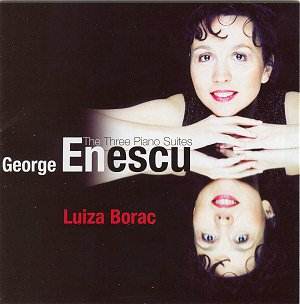It
reflects well on Borac and Avie that
such an ideal and unhackneyed programme
as this should have been chosen. The
music is unfamiliar, the timing is ample
and the liner notes are models of freshness
and span. Both the indefatigable Martin
Anderson and the thoughtful and virtuosic
Luiza Borac contribute articles.
The
four movement First Suite,
the work of a fifteen year old composer,
is thoroughly well defined by neo-baroque
and neo-classical criteria. The first
three movements are decided Bachian
with trills and badinage as well as
Olympian atmosphere. Ms Borac rescues
the music from any heaviness. The final
movement is closer to Hummel or early
Beethoven (last movement of the First
Piano Concerto). The adagio is the most
refreshingly impressive movement (tr.
3).
The
Second Suite breaks from
the bondage of the past and from neos
and retros of any sort. The first
movement's romantically majestic chiming
makes way for the arpeggiated lyric
dreamland of the Sarabande and
the humid phantasmal meander of the
Pavane. The Bourrée
is like much of the rest of this
attractive suite - a fusion of Debussy,
Warlock and Poulenc.
The
Third Suite is in seven
movements. It is contemporary with the
Great War - the twelve months before
the start and two years into hostilities.
The style is yet more swirlingly impressionistic
(tr.13), scathingly fantastic (tr.12),
discordantly exuberant (tr. 15) and
poised than in the Second Suite. Carillon
Nocturne with its grotesqueries,
Chinoiserie and atonality leans in and
out of Schoenberg's Hanging Gardens
and Cyril Scott's Lotusland.
This movement shows Mlle Borac at her
most impressive with her powers of concentration
unwavering. It rounds out the disc in
an enigmatic mist: elusive and sphinx-like.
Rob
Barnett
see also review
by Kevin Sutton

![]() for
details
for
details